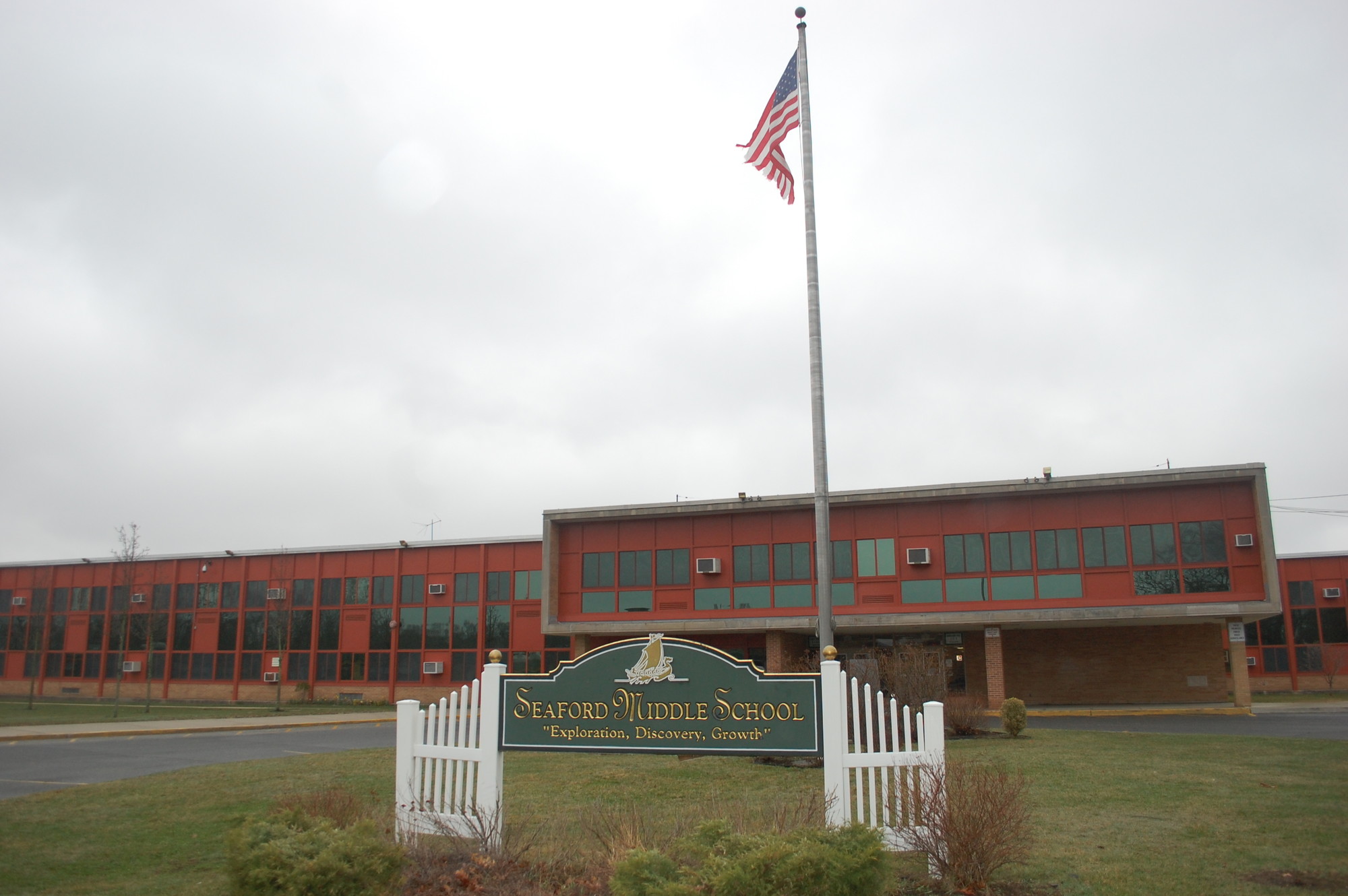Seaford Middle School turns 50
Anniversary celebration is Friday
Like most communities on Long Island, Seaford was growing at an unprecedented rate in the 1950s and ’60s, and that meant a need for more schools. In January 1965, Seaford Junior High, the last school to go up in town, opened its doors.
Today it is Seaford Middle School, and it is celebrating its 50th anniversary. In a half-century, just as much has changed as has stayed the same. The building has kept to its original size and floor plan, and the hallways still have the same blue, pink and beige colored blocks. An elevator has been added, the windows have been replaced, and the electrical systems have been upgraded to keep up with the demands of technology.
‘We thought it was very modern — big rooms,” said Karen Seltzer, who stepped into the school for the first time in 1965 as a seventh-grader. “It was shiny and new. What was not to like?”
Ground was broken on Dec. 18, 1963, in a ceremony hosted by then-Board of Education President Thomas F. Hogan. The $2.75 million building was designed with a capacity of 1,130 students, and facilities included 28 regular classrooms, dedicated space for art, music, home economics and industrial arts, an administrative suite, six science labs, a gym and a cafeteria. Construction lasted about a year.
Seltzer and her classmates spent the first half of the year on the other side of the athletic fields, at Seaford High School, which had opened eight years earlier, as they waited for the junior high to be completed. They were on split sessions, and her older brother went to school in the morning while she was there in the afternoon.
After Christmas break, the seventh-, eighth- and ninth-graders finally got a school to call their own. Students in both schools welcomed the change, as it alleviated overcrowding by the record-setting baby boom generation.
Seltzer, who now lives in Muttontown and is a former editor of the Wantagh-Seaford Citizen, recalled the language lab, which was divided into cubicles, each one with a terminal and headphones. The students repeated the French phrases they heard, and the teacher could listen in. That was high-tech in 1965, Seltzer said, and was the first time she used electronics as a learning tool.

 54.0°,
Fair
54.0°,
Fair 









